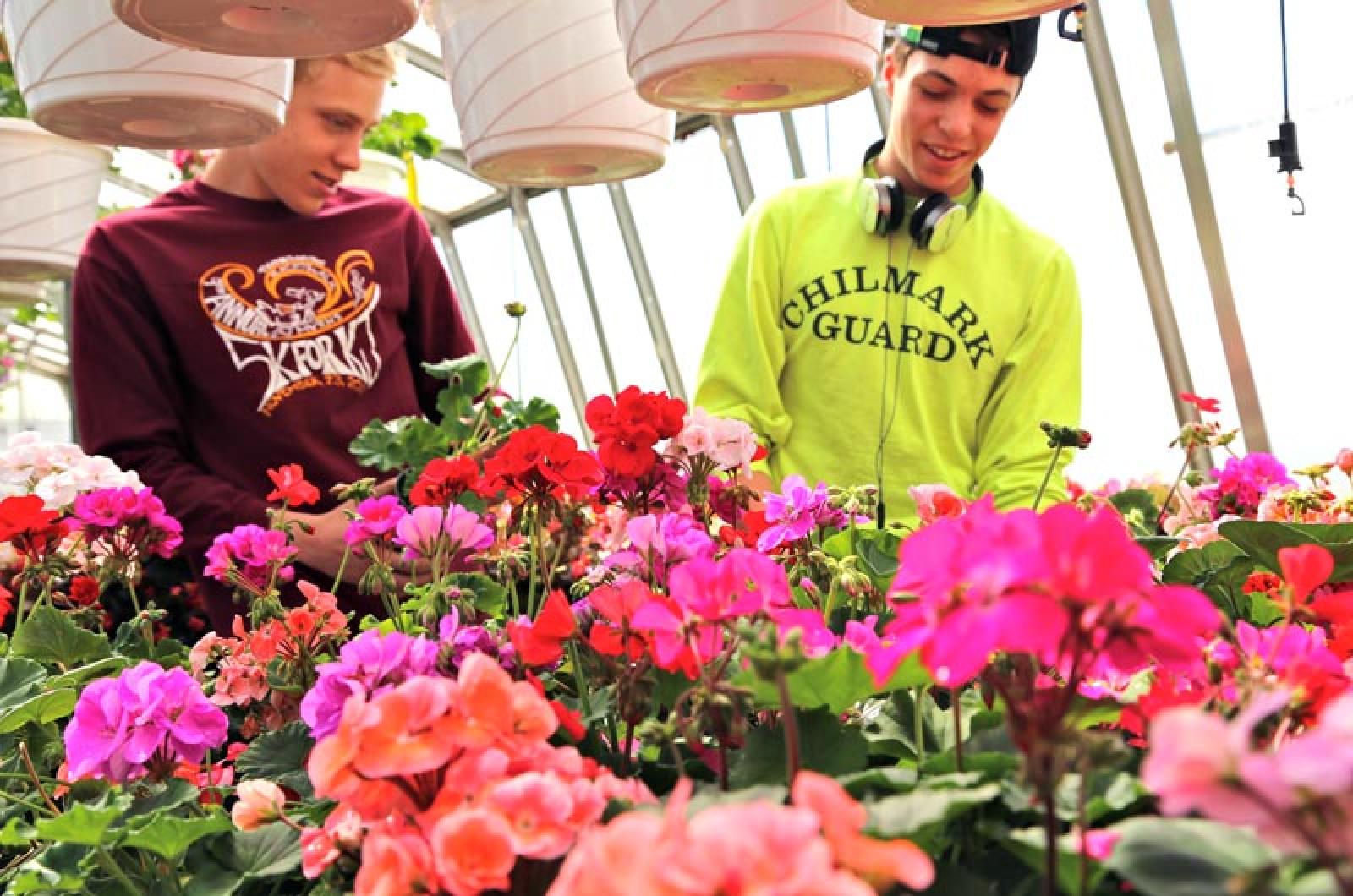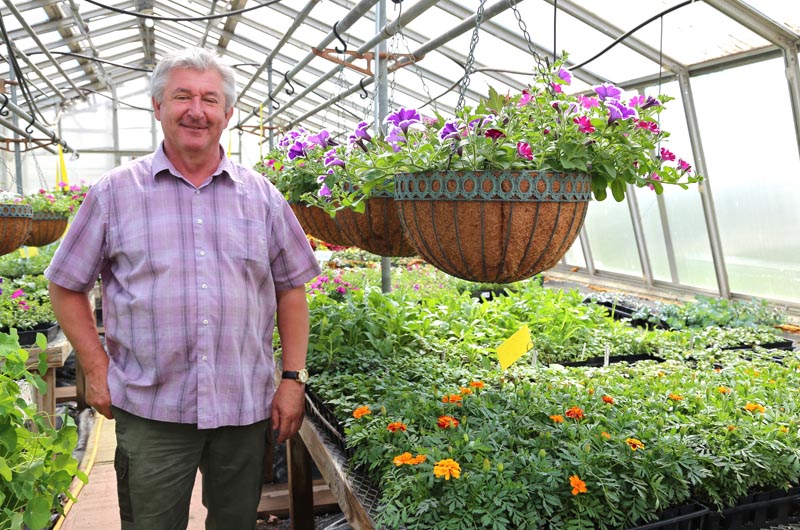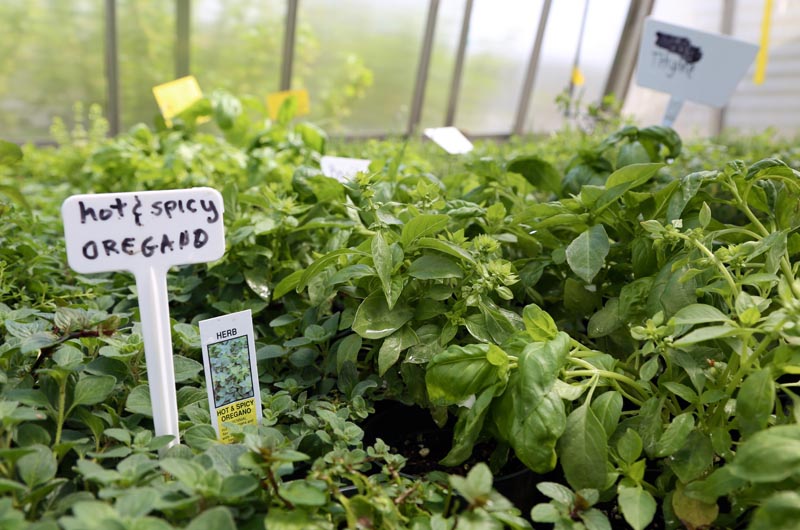Colorful rows of flowers, vegetables and herbs were taking shape this week at Martha’s Vineyard Regional High School, where the 20th annual plant sale, organized by the school’s horticulture, aquaculture and landscaping department, will begin Thursday and run through next week.
John Wojtkielo, who has headed the department since around the time the plant sales began, said they are just one element of an ongoing relationship between the school and the wider community.
“We’re not here to make a profit, just as an appreciation for all the support we’ve had in the past,” he said of the anniversary sale. As in past years, all proceeds will support the department.
Martha’s Vineyard Regional High School offers a localized vocational training program that students can take alongside their regular courses. Mr. Wojtkielo said the program amounts to a “high school major” in such areas as horticulture, culinary arts and carpentry and building trades. The 700-student school has twice won the National Blue Ribbon Award for academic excellence.
The plant sales haven’t changed much since the beginning, Mr. Wojtkielo said, although the selection of plants is different each year. This year’s sale will include at least 100 varieties, with a greater proportion of vegetables to meet the Island’s growing demand for fresh, local produce.
The prices have also remained relatively constant, going up only once in the last 20 years, Mr. Wojtkielo said. He noted that the same sign with a price guide had been used every year since the first sale. This year, perhaps accidentally, someone finally threw it away.
Oren Osnoss, a junior in the program, was working on a new sign on Tuesday. Taking a break, he said that growing up in Chilmark with a family that was involved in agriculture and friends who owned local farms set him on his path to horticulture.
“I grew up pretty much going to a farm every day, because they were family friends and I always liked hanging out around there,” he said. In high school, he felt at home in the horticulture program. “I don’t really see myself doing any other profession,” he said.
Oren plans to intern this summer at a small landscaping and gardening businesses on the Island. He also hopes to follow in the footsteps of many graduates of the horticulture program, and continue his studies at the Stockbridge School of Agriculture at the University of Massachusetts.
The demand for horticulturists (including landscapers, masons and other specialists) is growing rapidly, especially in southern New England and New York, where wealthy communities create a thriving market, Mr. Wojtkielo said.
According to university administrators, he said, the 100 or so graduates of the Stockbridge School each year are not enough to keep up with the growing demand. Martha’s Vineyard is an especially fruitful region for the trade, he added.
“I’ve been here for 20 years on the Island, and when I first got here there were probably three big landscape companies,” he said. “Now there are probably 100.” Some of those companies are owned by Mr. Wojtkielo’s former students.
The high school’s vocational training department seeks to connect students to the Island community. Courses include classroom activities as well as local projects, and focus on the skills required to maintain a seaside resort community. Students have many opportunities to intern on the Island in the summer, and to find full-time work here after graduating, Mr. Wojtkielo said.
Student projects in the horticulture program have included the re-landscaping of Ocean Park in Oak Bluffs 12 years ago, and the design and planting of a garden at the Vineyard Haven library. Students recently designed and planted a garden at Thimble Farm on the Tisbury-Oak Bluffs town line, and are now working on a plan for the Portuguese-American Club in Oak Bluffs.
The Island environment “gives the kids good learning experience,” Mr. Wojtkielo said. “It’s almost like a living laboratory.” Each project involves a variety of skills and involves students at each step, he said.
In addition to relationships in the community, different departments within the school also interact. Art students might spend a day drawing plants in the tropical greenhouse, for example, or a science class might study the life cycles of fish being raised for aquaculture.
“That’s a big part of our comprehensive high school,” Mr. Wojtkielo said. “You can have science projects, math projects, art, English, building trade skills.”
He pointed out that the benefits of a local horticulture institute go beyond aesthetics. This year, for example, students grew 10,000 small pots of beach grass, which will be used to help control erosion along the Island’s south shore. (In the 1990s, students at the high school and all six of the Island’s elementary schools took part in a massive effort to reinforce the south shore with beach grass.)
Summer is a quieter time at the school, but the gardening continues year-round. A separate garden operated by the Island Grown Initiative is one of many around the Island that help people connect with local food sources. Island Grown works with all K-12 students on Martha’s Vineyard, and with six of the Island’s preschools. In 2011, Mr. Wojtkielo’s students constructed the high school garden, which remains active throughout the summer.
Twice a year, Island Grown and the high school culinary department work with a local restaurant to create a locally sourced dinner. The most recent dinner, hosted by Sweet Life Cafe in Oak Bluffs on May 3, raised about $4,000 to support the campus garden.
The 20th annual plant sale at Martha’s Vineyard Regional High School will run from 8 a.m. to 1 p.m., Thursday, May 15, through Friday, May 23.









Comments (3)
Comments
Comment policy »